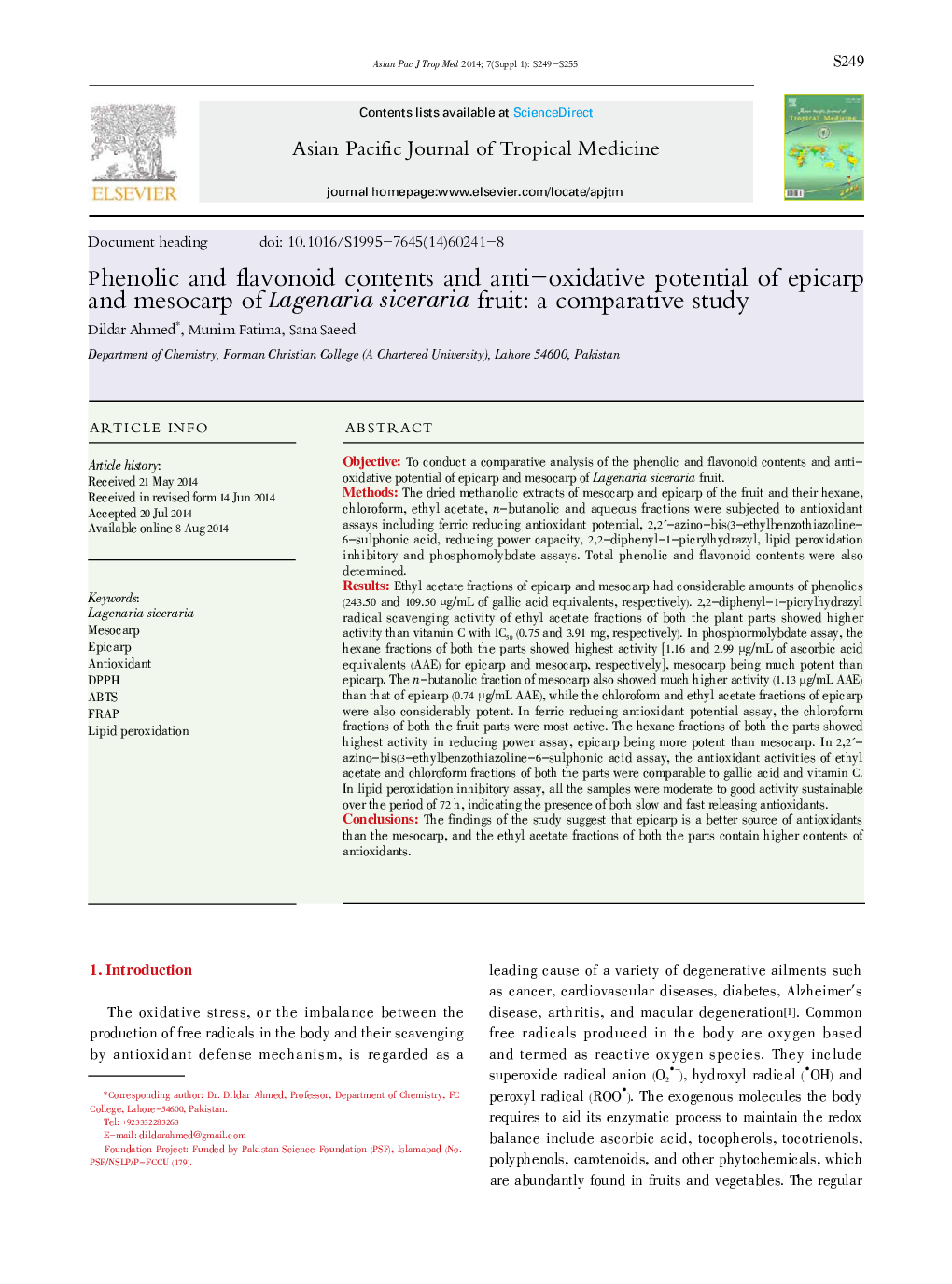| Article ID | Journal | Published Year | Pages | File Type |
|---|---|---|---|---|
| 3455941 | Asian Pacific Journal of Tropical Medicine | 2014 | 7 Pages |
ObjectiveTo conduct a comparative analysis of the phenolic and flavonoid contents and anti-oxidative potential of epicarp and mesocarp of Lagenaria siceraria fruit.MethodsThe dried methanolic extracts of mesocarp and epicarp of the fruit and their hexane, chloroform, ethyl acetate, n-butanolic and aqueous fractions were subjected to antioxidant assays including ferric reducing antioxidant potential, 2,2′-azino-bis(3-ethylbenzothiazoline-6-sulphonic acid, reducing power capacity, 2,2-diphenyl-1-picrylhydrazyl, lipid peroxidation inhibitory and phosphomolybdate assays. Total phenolic and flavonoid contents were also determined.ResultsEthyl acetate fractions of epicarp and mesocarp had considerable amounts of phenolics (243.50 and 109.50 μg/mL of gallic acid equivalents, respectively). 2,2-diphenyl-1-picrylhydrazyl radical scavenging activity of ethyl acetate fractions of both the plant parts showed higher activity than vitamin C with IC50 (0.75 and 3.91 mg, respectively). In phosphormolybdate assay, the hexane fractions of both the parts showed highest activity [1.16 and 2.99 μg/mL of ascorbic acid equivalents (AAE) for epicarp and mesocarp, respectively], mesocarp being much potent than epicarp. The n-butanolic fraction of mesocarp also showed much higher activity (1.13 μg/mL AAE) than that of epicarp (0.74 μg/mL AAE), while the chloroform and ethyl acetate fractions of epicarp were also considerably potent. In ferric reducing antioxidant potential assay, the chloroform fractions of both the fruit parts were most active. The hexane fractions of both the parts showed highest activity in reducing power assay, epicarp being more potent than mesocarp. In 2,2′-azino-bis(3-ethylbenzothiazoline-6-sulphonic acid assay, the antioxidant activities of ethyl acetate and chloroform fractions of both the parts were comparable to gallic acid and vitamin C. In lipid peroxidation inhibitory assay, all the samples were moderate to good activity sustainable over the period of 72 h, indicating the presence of both slow and fast releasing antioxidants.ConclusionsThe findings of the study suggest that epicarp is a better source of antioxidants than the mesocarp, and the ethyl acetate fractions of both the parts contain higher contents of antioxidants.
